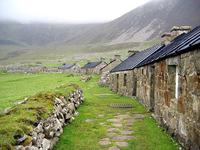You are in: Europe -> United Kingdom. England -> St Kilda, and traditional search or Image Gallery will yield results of this site only
St Kilda
| Site number: | 387 |
|
| Type of site: | Mixed | |
| Date: | - | |
| Date of Inscription: | 1986, 2004,2005 | |
| Location: | Europe, United Kingdom of Great Britain and Northern Ireland | |
Up to 75 images are shown here. Click on each for more details or on Image Gallery for more images.
Six official UN languages:
Arabic,
Chinese,
English,
French,
Russian
Other languages: Catalan, Czech, Dutch, Finnish, German, Hungarian, Icelandic, Italian, Japanese, Norwegian-bokmål, Portuguese, Scottish Gaelic, Swedish, Welsh
Other languages: Catalan, Czech, Dutch, Finnish, German, Hungarian, Icelandic, Italian, Japanese, Norwegian-bokmål, Portuguese, Scottish Gaelic, Swedish, Welsh
| Description: | In 1986 when the site was initially placed on the World Heritage List it was inscribed for its outstanding natural features and wildlife, today the site’s inscription had been expanded to also envelop its cultural value, consequently becoming a mixed site. Encompassing the islands of Hirta, Dun, Soay and Boreray, this volcanic archipelago has been uninhabited since 1930, and bears testimony to over 2,000 years of human occupation in severe conditions that are customary to the Hebrides. Human remnants consist of built constructions and field systems, the cleits and the traditional Highland stone houses. They mark a subsistence economy’s endangered remains based on the products of birds, agriculture and sheep farming. --WHMNet paraphrase from the description at WHC Site, where additional information is available. | |
| St Kilda (Scottish Gaelic: Hiort) is an isolated archipelago 64 kilometres (40 mi) west-northwest of North Uist in the North Atlantic Ocean. It contains the westernmost islands of the Outer Hebrides of Scotland and of the United Kingdom. The largest island is Hirta, whose sea cliffs are the highest in the United Kingdom. The Gaelic-speaking population probably never exceeded 180 in number and was never more than 100 after 1851. Although St Kilda was permanently inhabited for at least two millennia and had a unique way of life, the local population was evacuated in 1930. The islands continue to be administratively a part of the Western Isles of Scotland and are considered part of Harris parish. --Wikipedia. Text is available under the Creative Commons Attribution-ShareAlike License. | ||
| Source: | http://whc.unesco.org/en/list/387 | |
| Reference: | 1. UNESCO World Heritage Center, Site Page. | |












































